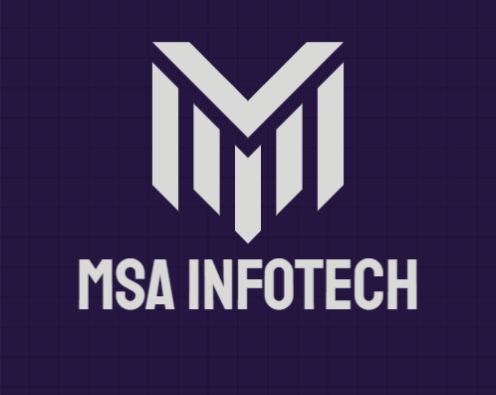Unveiling the Magic of Snowflake: A Software Developer's Guide to Cloud Data Warehousing
- ETL / ELT
- November 04, 2024
-
Unveiling the Magic of Snowflake: A Software Developer's Guide to Cloud Data Warehousing
Introduction:

In the vast realm of data management and analytics, Snowflake has emerged as a revolutionary force. It offers a modern and efficient solution to the age-old challenges of traditional data warehousing. Whether you're a budding data enthusiast or a seasoned professional seeking to enhance your skill set, this beginner's guide aims to demystify the basics of Snowflake and set you on the path to wielding the power of cloud data warehousing.
Chapter 1: What is Snowflake?

Forget the icy crystals; Snowflake is a cloud-based data warehousing platform built to handle massive amounts of data with efficiency and ease. Unlike traditional data warehouses that demand extensive infrastructure and constant maintenance, Snowflake operates entirely in the cloud, providing a scalable and flexible solution for data storage and analysis.
Chapter 2: Dive into the Architecture
The magic behind Snowflake lies in its unique multi-cluster, shared data architecture. Imagine storage and compute as separate entities. You have the freedom to independently scale compute clusters (virtual warehouses) for optimal query performance. Centralized storage keeps your data safe and accessible, and you only pay for what you use.

As the diagram shows, the Snowflake architecture comprises three key layers:
1. Storage Layer: This layer is responsible for storing all data in a single, secure, and centrally managed repository. Data is stored in a compressed, columnar format for efficiency and security. This layer scales independently of compute resources, meaning you can increase storage capacity without impacting query performance.
2. Compute Layer: This layer is responsible for processing queries using virtual warehouses. These are clusters of cloud-based compute resources that scale up or down based on your workload demands. Each virtual warehouse has its own temporary storage for query execution. This allows for independent scaling of compute resources, meaning you can adjust your processing power as needed without affecting data storage.
3. Cloud Services Layer: This layer manages essential services like metadata, security, access control, and infrastructure. It orchestrates communication between other layers and doesn't store or process data directly.
Chapter 3: Developer-Friendly Features
● Effortless Data Sharing: Collaborate seamlessly by sharing data between accounts without the complexities of ETL processes. Say goodbye to data silos!
● SQL, Your Familiar Friend: Craft queries using the familiar SQL syntax you already know and love. No need to learn a new language to unlock the power of Snowflake.
● Automatic Scaling: No more fretting about resource bottlenecks. Snowflake scales compute automatically, ensuring your queries run smoothly even during peak usage times.
● Security at its Core: Snowflake prioritizes data security with built-in encryption, role-based access controls, and audit trails, giving you complete peace of mind.
Chapter 4: Get Coding with Snowflake
Ready to harness the power? Here's your quickstart guide:
1. Sign Up: Create a free trial account and explore the intuitive interface.
2. User Interface: Navigate with ease. Manage warehouses, databases, and execute queries in a familiar environment.
3. Connect and Load: Import data from various sources like databases, cloud storage, or APIs using intuitive tools.
4. Query and Analyze: Start querying your data using familiar SQL syntax and unlock powerful insights.
Chapter 5: Level Up Your Snowflake Expertise

Snowflake provides a wealth of resources to fuel your learning journey:
● Comprehensive Documentation: Dive deep with detailed guides and tutorials: https://docs.snowflake.com/
● Hands-on Training: Enroll in courses and workshops to gain practical skills: https://www.snowflake.com/en/resources/learn/training/
● Active Community: Join forums, attend webinars, and connect with other developers to share knowledge and troubleshoot challenges: https://community.snowflake.com/s/
Bonus: Embrace Your Favorite Languages
Snowflake seamlessly integrates with popular programming languages like Python and Java, allowing you to leverage your existing skills and tools:
● Python: Use libraries like snowflake-connector-python to connect, execute queries, and manage data from your Python scripts: https://github.com/snowflakedb/snowflake-connector-python
● Java: Utilize the Snowflake JDBC Driver to perform similar tasks within your Java applications: https://github.com/snowflakedb/snowflake-jdbc
Conclusion:
Snowflake is a game-changer for software developers, offering a modern, efficient, and secure platform for handling data at scale. With its developer-friendly features, cloud-native architecture, and language support, you can focus on building innovative applications while Snowflake takes care of the heavy lifting. Embrace the magic, explore the possibilities, and join the growing community of developers transforming their data-driven journey with Snowflake!
Start Your Data Journey Today With MSAInfotech
Take the first step towards data-led growth by partnering with MSA Infotech. Whether you seek tailored solutions or expert consultation, we are here to help you harness the power of data for your business. Contact us today and let’s embark on this transformative data adventure together. Get a free consultation today!

We utilize data to transform ourselves, our clients, and the world.

Partnership with leading data platforms and certified talents






